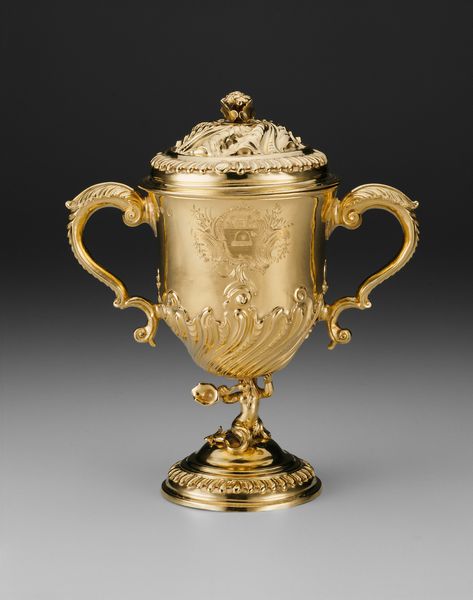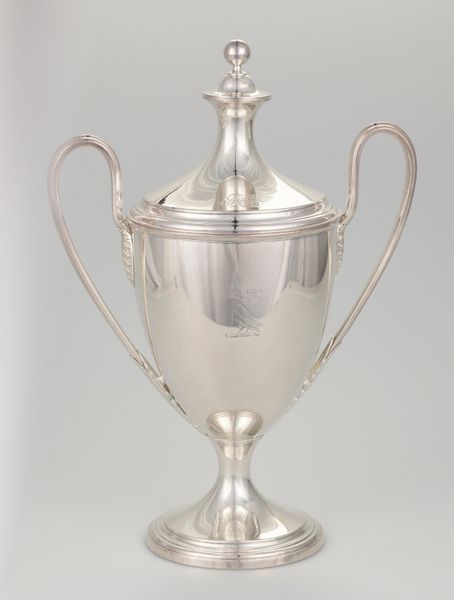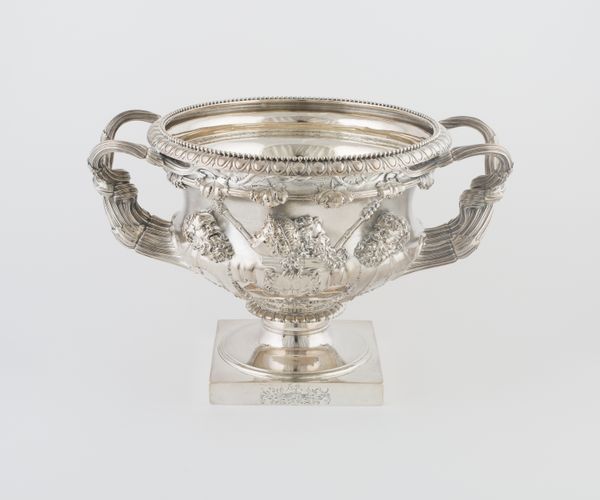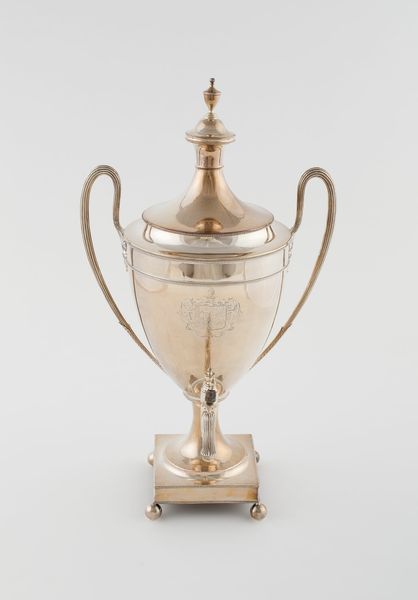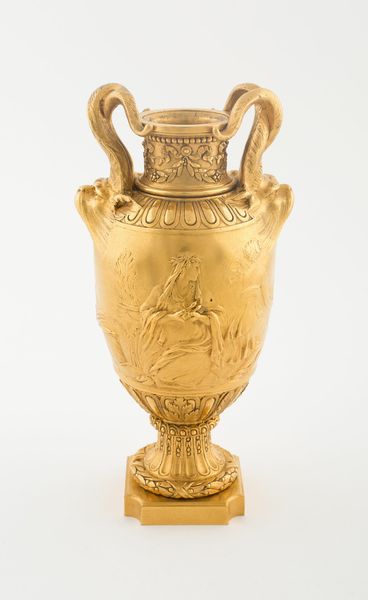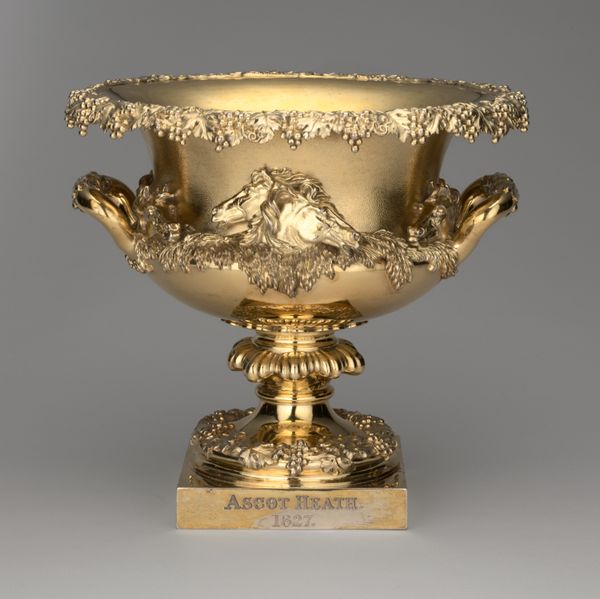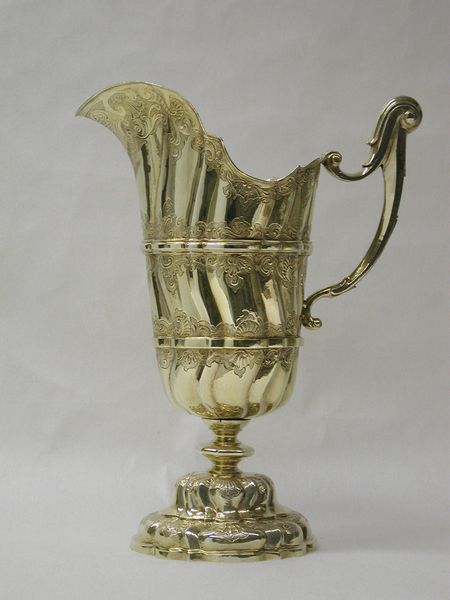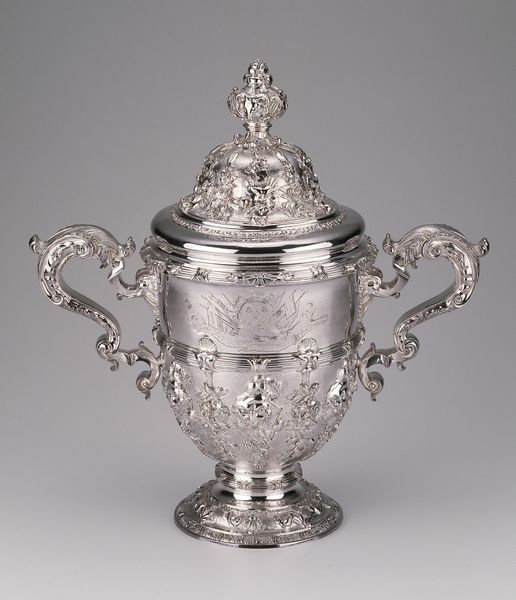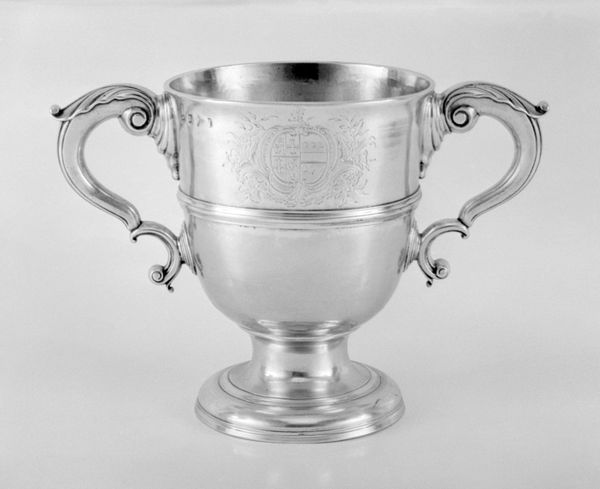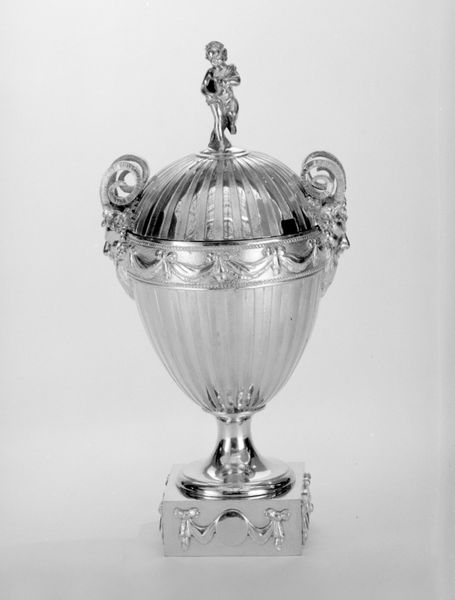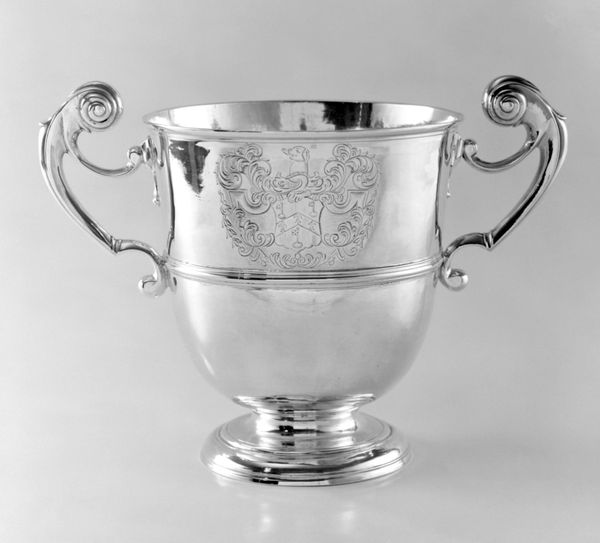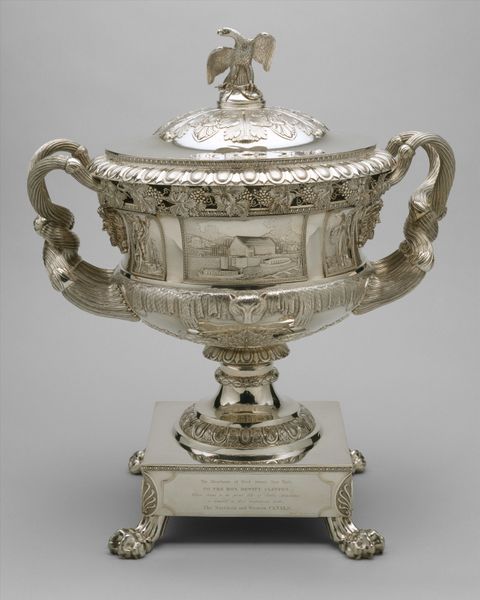
Set of four wine coolers 1828
0:00
0:00
Dimensions: 14 1/4 x 12 x 8 3/4 in. (36.2 x 30.5 x 22.2cm)
Copyright: Public Domain
Curator: Before us, we have a set of four silver wine coolers crafted in 1828 by Edward, Edward, James, and Barnard, also known as Edward Barnard & Sons. Editor: My initial impression is that they are dazzling. The play of light on the silver surface creates a sense of dynamic movement. What strikes me the most is the baroque composition and the cupids embedded within the foliate pattern. Curator: Absolutely. The foliate motif is more than mere decoration. Notice the intricate network of grapevines intertwined across the coolers’ surfaces. Each tendril contributes to the object’s overall structural rhythm and form. I wonder, how might the symbolic imagery here contribute to its interpretation? Editor: These grapevines and cupids draw upon a deep well of classical and Christian imagery. Wine, historically associated with Dionysus and Bacchus, also gains significance in Christian iconography. The playful cherubs nestled among the grapes evoke fertility and abundance, certainly alluding to the pleasures of consumption and luxury, but maybe hinting at divine celebration as well. Curator: An interesting connection. Formally, the artist plays with contrasting textures. Smooth, polished surfaces interplay with areas of dense, almost sculptural relief. This juxtaposition amplifies the visual impact and suggests a self-aware design process, doesn't it? Editor: I agree; the juxtaposition really drives home that inherent duality: the earthly delights suggested by the subject and the suggestion of divine spirit, both physically and symbolically expressed in one magnificent piece. The act of communal drinking throughout history has been infused with ritualistic importance. In what circumstances might these coolers have been used? Curator: These objects would have certainly played a role in the performative aspects of aristocratic life—ceremonial feasts or diplomatic events. These coolers function not only as utilitarian objects but also as symbols of wealth and social standing. Their impressive size and lavish ornamentation would undoubtedly communicate a message of opulence and refinement. Editor: So we have a beautiful object that unites history, philosophy, and artistic ingenuity. I feel that my eyes have had a good meal. Curator: Indeed, the work transcends simple utility and becomes a sophisticated cultural artifact, inviting interpretation on both visual and symbolic levels.
